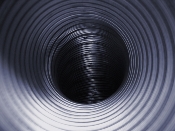 There are Simple Things You Can Do to Reduce Indoor Pollutants
There are Simple Things You Can Do to Reduce Indoor Pollutants
Many of the contaminants that pass through your household air can end up settling in the various components of your HVAC system, such as your ductwork. With proper duct maintenance, however, you can reduce the presence of these contaminants in your home. With that in mind, here are five easy steps to help keep your ducts free of contamination: Continue reading “Maintain Your Ducts And Keep Them Free Of Contaminants In Five Easy Steps”

 Leaks and Gaps in Your Home’s Ductwork Will Waste Precious Energy
Leaks and Gaps in Your Home’s Ductwork Will Waste Precious Energy